Microsoft Transformation Story 1

Empowering The Client Company with OLAP Office: A Story of Transformation Through Microsoft Technologies
Introduction:
In a landscape where design and durability intersect, The Client Company stands out as a beacon of quality and innovation in the tile and natural stone industry. Since its inception, The Client Company has distinguished itself as y a premier designer, marketer, and producer, committed to enriching spaces with a diverse range of high-quality products. The challenge, however, was harnessing the power of data to further elevate their market position and operational efficiency. Enter OLAP Office, a pioneer in Business Intelligence (BI) solutions, whose expertise in leveraging Microsoft technologies has transformed and accelerated the data analytics landscape for The Client Company while lowering the total cost of ownership.
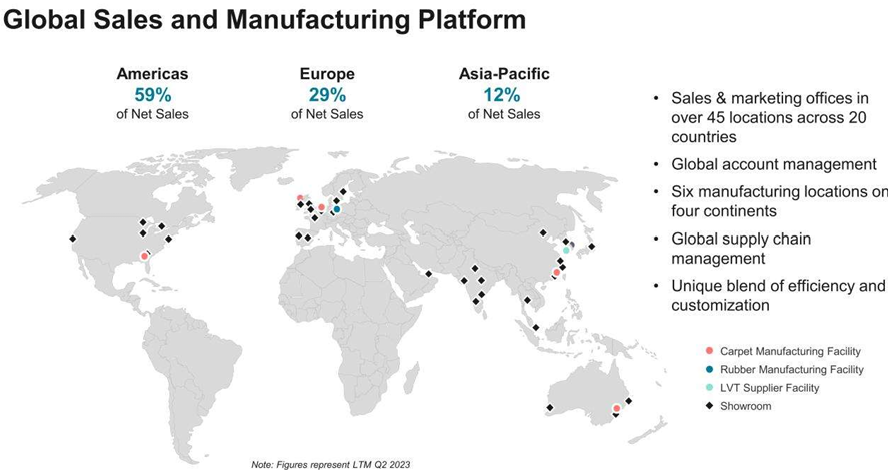
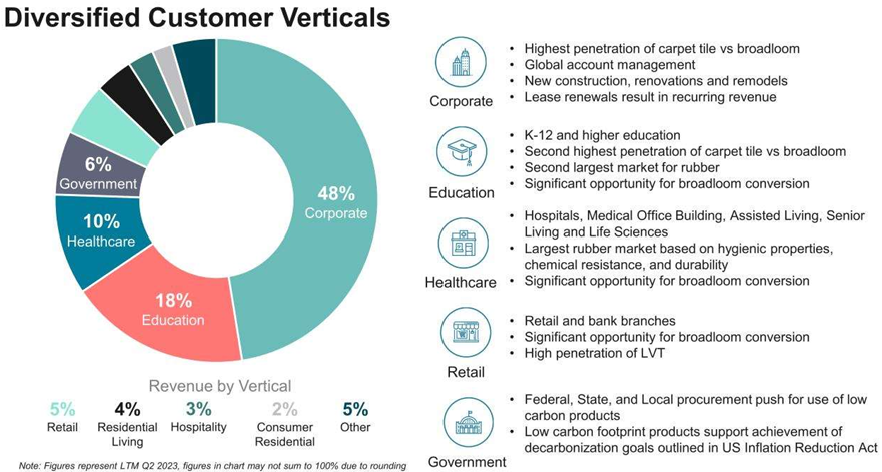

The Challenge:
The Client Company, with its vast array of products and national presence, faced the intricate challenge of unifying and analyzing vast amounts of data across sales, finance, inventory, and management departments. The goal was clear: to enhance decision-making, streamline operations, and deliver unparalleled customer service. However, the existing data management framework was not equipped to handle the complexity and scale of The Client Company’s operations, and a more modern reporting and analytics platform was required.
OLAP Office’s Solution:
OLAP Office, leveraging its profound expertise in BI solutions and Microsoft technologies, proposed a comprehensive transformation strategy for The Client Company. The solution encompassed:
- Advisory on Microsoft Technologies and Best Practices: A roadmap to modernize The Client Company’s data architecture, employing Microsoft’s Power BI and Azure services to align with industry best practices.
- Development of a Tailored Solution: Implementing metadata driven pipelines and a star-schema data model to efficiently organize transaction and master data, ensuring performance, scalability, and accessibility of insights across all departments.
- Training and Support: Comprehensive training and ongoing support for The Client Company’s staff, empowering them to leverage the newly developed solution to its full potential.
Power BI Integration:
The integration of Power BI, a pivotal component of Microsoft’s business intelligence suite, played a crucial role in The Client Company’s transformation. Power BI’s data visualization and exploration capabilities enabled stakeholders to identify trends, outliers, and opportunities effortlessly. Seamless integration with other Microsoft tools enhanced the data ecosystem’s robustness and scalability.

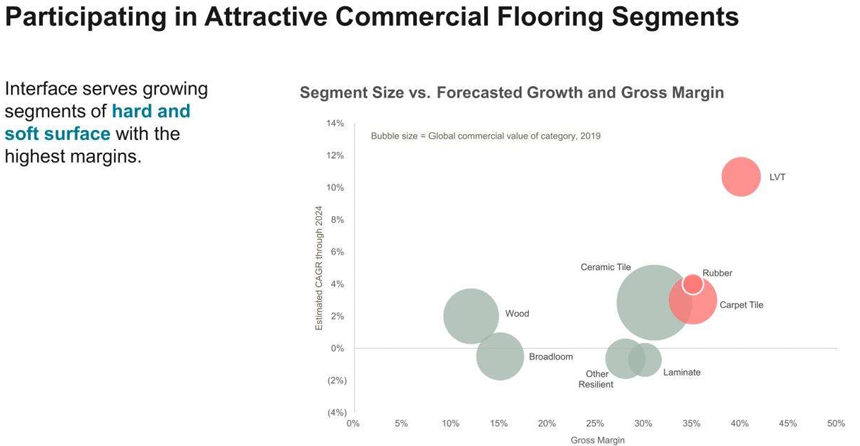
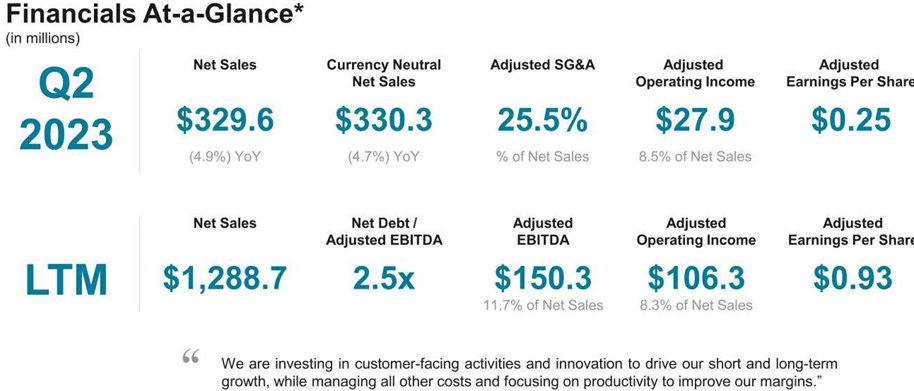
Microsoft Fabric Integration:
The adoption of Microsoft Fabric, integrating various Microsoft applications into a cohesive solution, significantly enhanced The Client Company’s data management, engineering, analytics, and business intelligence capabilities. This unified data solution fostered collaboration among data engineers, scientists, business analysts, and decision-makers, driving innovation and strategic growth.
Impact of the Solution:
- Enhanced Data Accessibility and Decision-Making: With the automatic generation of user-friendly names from Emser’s data dictionary and a unified version of the truth, The Client Company’s team can now access and analyze data effortlessly, leading to more informed decision-making.
- Performance and Scalability: The adoption of Synapse Pipelines, Synapse SQL Serverless pools, and Azure Data Lake Storage Gen2 (ADLS) has significantly improved the performance and scalability of The Client Company’s reporting and analytics environment.
- Cost-Effectiveness and Security: The solution’s cloud-native features, including cost-effective data storage and advanced security protocols such as Azure VNets, Private Endpoints, and Azure Data Factory have optimized The Client Company’s operational costs while ensuring data integrity and compliance.
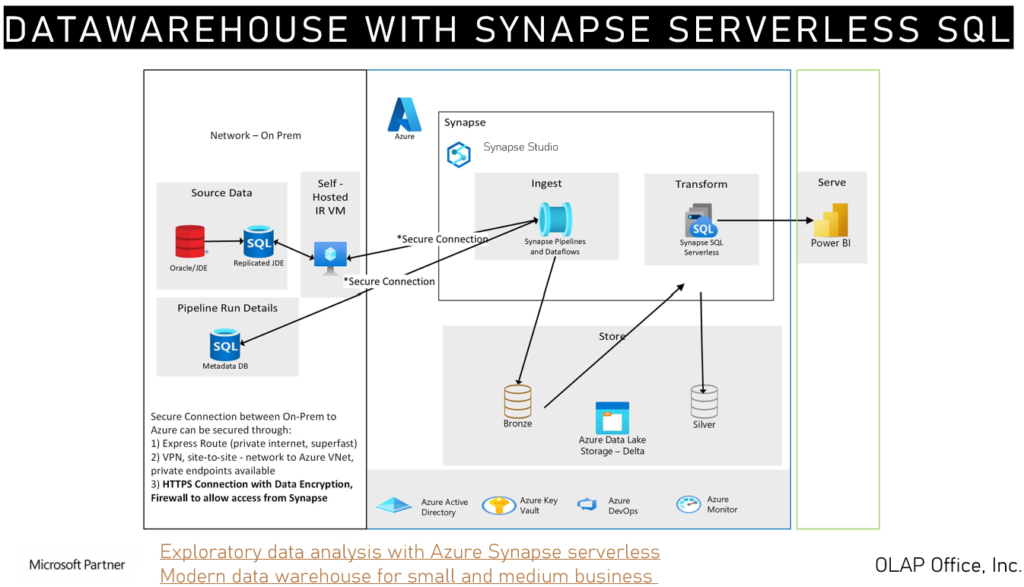
Market Analysis and Competitive Insight Through Competitor Dataset Integrations:
In an innovative stride towards comprehensive market analysis, The Client Company, in collaboration with OLAP Office, are integrating competitor datasets within its Power BI infrastructure. This strategic move would leverage OLAP Office’s expansive repository of industry-related datasets, enabling The Client Company to conduct a detailed comparative analysis against similar entities within the tile and natural stone sector. By assimilating these datasets, The Client Company gains invaluable insights into market trends, competitive positioning, and emerging opportunities. This not only enhances its ability to gauge its progress accurately but also sharpens its strategic foresight in identifying shifts in consumer preferences, technological advancements, and potential market disruptions. Such a proactive approach to data analytics empowers The Client Company to refine its product offerings, marketing strategies, and operational efficiencies, ensuring it remains at the forefront of innovation and customer satisfaction in an ever-evolving market landscape.
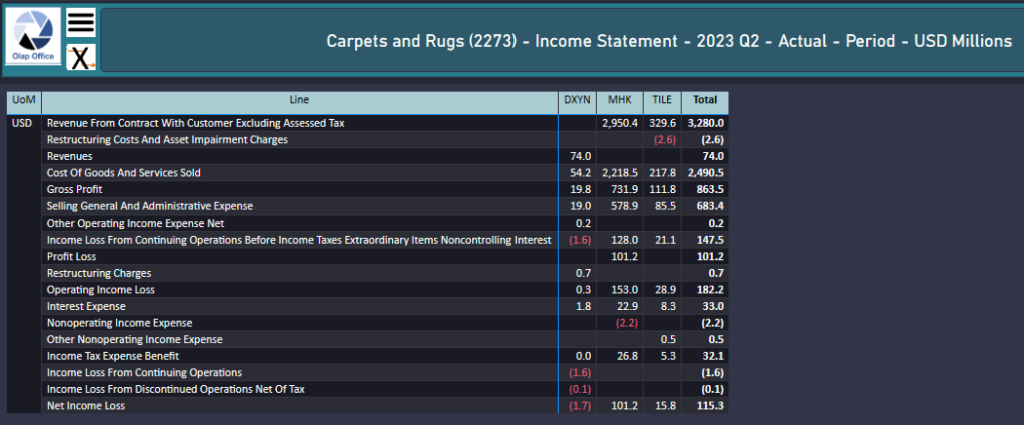
Conclusion:
The strategic incorporation of Power BI and Microsoft Fabric into The Client Company’s data strategy, facilitated by OLAP Office, represents a paradigm shift in how the company approaches data management, analytics, and business intelligence. These technologies have not only streamlined operations and enhanced decision-making but also established a foundation for continuous innovation and growth in the competitive tile and natural stone industry.